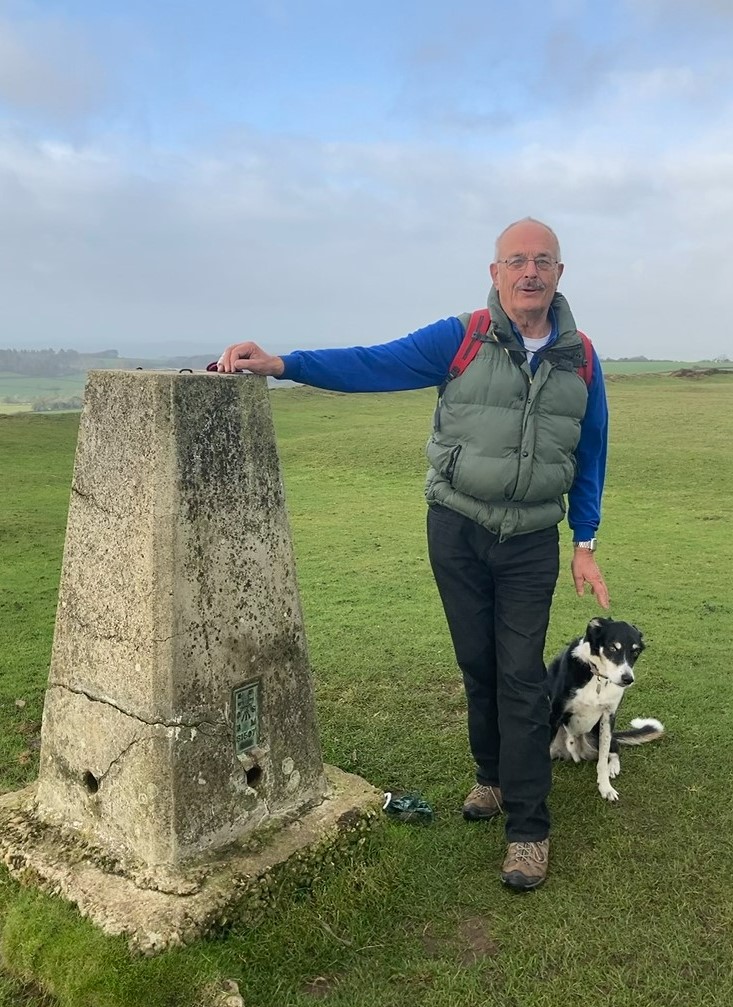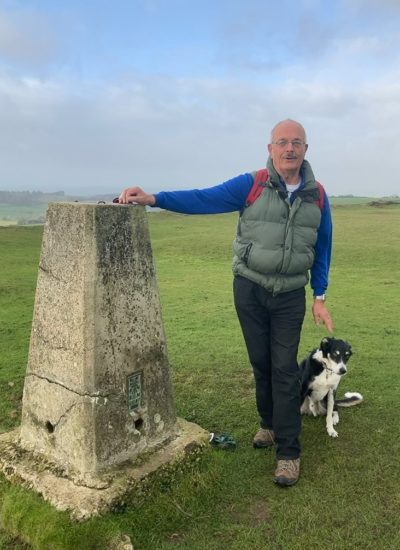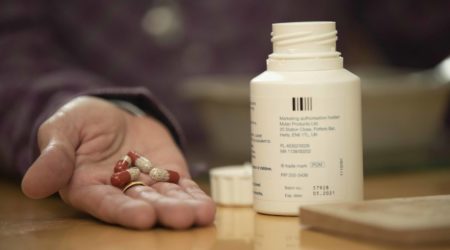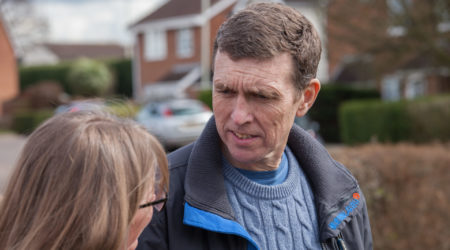

Iain
Iain was in his late 50s when he was diagnosed with cancer on the Islets of Langerhans in the pancreas, almost 20 years ago. Thanks to early detection and treatment, he was given the all clear and tells us about life after the Whipple’s procedure.
Following a career in the RAF and police I retired to Devon in 2001. In spring of 2003 I was helping my late wife with the gardening. For unexplained reasons I felt tired and not up to doing much. My wife thought I was being daft. Around 4pm I went indoors, and I felt extremely cold. Bearing in mind this was a pleasant spring day there was no reason to feel the way I did. No matter what I did I could not get warm, so I went to bed. Within an hour the sheets needed changing due to my sweating so profusely. I finally went to sleep and, in the morning, I woke and all was well.
My GP sent me for tests
Two weeks later it happened again. I saw my GP who was mystified, he prodded and poked and ordered a blood test. I was recalled to see my GP and he looked at me and said “you are either seriously ill or there is not much to worry about.” He sent me off to the local hospital with a covering letter.
I waited in a ‘triage’ ward and when a doctor finally saw me his first comment was “you look well jaundiced.” This came as a surprise as I had not noticed, but when I checked my fingers they looked as if I smoked 100 a day. I was admitted and had cameras put into every orifice they would fit. After three weeks I was diagnosed with a tumour on the Islets of Langerhans part of the pancreas.
I had the Whipple’s procedure
I was sent home to wait for an appointment at the specialist centre. While waiting, symptoms kept appearing, one being that I would eat a meal and before finishing I would bring it back up. Finally, I attended hospital for a Whipple’s procedure. The medical team were wonderful. On the day, I went to theatre around 8am and returned to the ward around 5pm with tubes coming out of me in all directions. Thankfully I don’t remember anything else about it. The road to recovery began.
I was in hospital about three weeks. As I lay on my bed a man came in for the same procedure and on his day, he went down around 8am but came back by 12. For him, it was too late for the procedure. That was the point I realised how lucky I had been.
The side effects of surgery
I finally went home to recover. When I went into the hospital, I weighed 14 stone when I left I was 11. I hadn’t been able to eat any solids so the weight fell off. Not to mention having various bits removed. Not a recommended diet.
It was not long when side effects of Whipple’s became evident. To say I had anti-social wind would be an understatement. I was prescribed Creon, which replaces the enzymes that help with the breakdown of food in the digestive system.
Recovery went well until one day I had excruciating pain in the region of my stomach. Back into hospital where they diagnosed pancreatitis. I was admitted again while they waited for my amylase (another enzyme) levels to go down. In a strange way I was relieved that it was not more serious. Plenty of Oramorph (morphine) helped and I was sent home.
Getting used to life after the Whipple’s
Recovery was a long process with several CT scans and checks with specialists. It was decided that I did not need any chemotherapy treatment as the Whipple’s had done its job.
In 2008 I was given the all clear which put me into the 5% of the population who survived.
Life returned to a sort of normal. If I ran out or forgot to take my Creon it soon became evident to all around. Pancreatitis kept popping up, and at first I was back and forth to hospital. But I got used to the symptoms and was able to deal with it at home. I try to make sure I don’t get dehydrated, and if I feel it coming on it’s painkillers, paracetamol, and sleep. That sorts me out.
Life for me is now pleasant, I realise that I am extremely lucky. I walk the dog every day and try to play golf at least once a week. I’ve regained a healthy weight and live a full and active life. There’s nothing I can’t eat. If a meal looks a bit more fatty than the average I just take an extra Creon capsule. That seems to work. It took me about two years to get used to the right dose but I have learnt to live with it now.
I saw a TV programme about pancreatic cancer in October last year and again it was brought home to me how fortunate I have been. It inspired me to share my story and do the Challenge 24 campaign for Pancreatic Cancer UK. I’ve been part of my local Rotary Club for about 10 years and they’ve set me the challenges to raise funds. The picture is of me taking part in a challenge to climb the second highest point in Dorset, which is near me. I’m not musical at all but had to learn how to play a Christmas carol for them on the piano. All told I have about two to three hundred pounds of pledges in the pipeline so far. It all helps.
I feel very lucky to have been diagnosed early enough for treatment. It was a GP who realised all was not well and early detection that was my saviour.
June 2022



